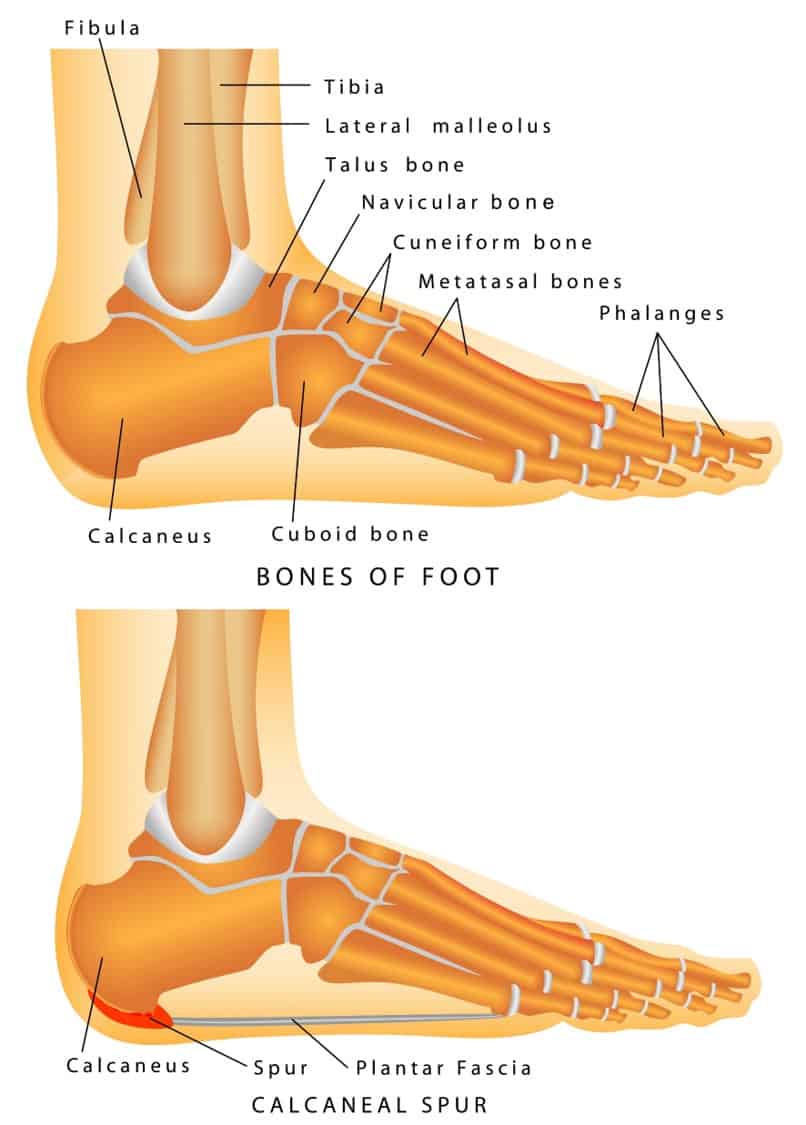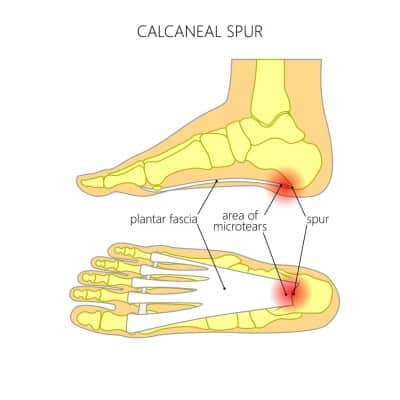Bone Spurs
Bone Spur Symptoms, Causes and Treatment
What Are Bone Spurs?
Bone spurs are bony growths that typically develop where bone meets bone. The growth is smooth and usually measures less than a centimeter in length. It takes years for a bone spur to form, with age is the greatest risk factor.
Although bone spurs may form anywhere, they’re most often found in the feet, hips, shoulder, knees, and spine. When they occur in the foot, they typically form at the front of the heel or in the center area at the top of the foot.

What Are the Symptoms of Bone Spurs?
In addition to pain, patients who have a foot or heel spur may experience:
- Redness, swelling, and/or warmth at the affected area
- Stiffness or other limitations that affect joint mobility
- Difficulty standing or performing weight-bearing activities
Heel spurs often come into contact with the plantar fascia, which causes pain similar to that of plantar fasciitis. It is not uncommon for a podiatrist to discover a bone spur when diagnosing plantar fasciitis. In fact, around half of plantar fasciitis patients develop heel spurs.

What Causes Bone Spurs?
Age is the greatest risk factor for bone spurs, whether on the heel or at the top of the foot. This is due in part to wear and tear that occurs over time, causing cartilage to break down. When that happens, your body creates extra bone in an attempt to repair itself, which may lead to bone spurs.
You’re also more likely to develop osteoarthritis as you age. This chronic condition causes the bone and joint degeneration that lead to the body creating excess bone – and the bone spur.
In addition to age, common bone spur causes include:
- Excess weight
- Shoes that are too tight
- Shoes that don’t provide proper support
- Regular weight-bearing activity that puts a lot of stress on your feet
Your risk is also greater if you have plantar fasciitis or flat feet.
Can Bone Spurs be Treated?
The bone spur itself is painless, which is why people often don’t realize they have one. When the patient does experience pain, it is because the spur touches other tissue, particularly nerves.
These days, treating bone spurs with surgery is rare. Instead, podiatrists rely on conservative treatment options. These may include:
- Cold compresses and ice packs after performing weight-bearing activities
- Orthotic inserts that offer arch support (specifically for treating heel spurs)
- Cortisone injections to help ease inflammation, stiffness, and pain
- Over-the-counter pain medications
- Physical therapy that includes stretching exercises, particularly before bed
- Resting the foot, particularly after performing weight-bearing activities
- A walking boot to help relieve pressure on the affected foot
If you experience severe pain and/or mobility limitations, you may be a candidate for surgery to remove the bone spur. However, your podiatrist should attempt conservative treatment options first.
Can You Prevent Bone Spurs?
Much depends on how early you begin practicing healthier lifestyle habits. That’s because one of the best things you can do to protect your feet from heel spurs is maintaining a healthy weight. This reduces the pressure and strain placed on your body.
It also helps to wear shoes that fit well and provide excellent support. Our article, Choosing the Right Shoe for Your Activity, is a good starting point.
Diagnosing Bone Spurs
After performing a physical exam, a doctor orders diagnostic tests of your feet. Typically, this means an X-ray, but it could also be an MRI or CT scan. If tests reveal bone spurs, the doctor begins treatment.
If you have recurrent heel or foot pain, call Preferred Foot & Ankle today at 480-497-3946.
All Foot & Ankle Conditions We Treat
Advanced Foot & Ankle Solutions
Have Questions or Need Care?
We’re here to help! Schedule your appointment online now for fast and easy care.
